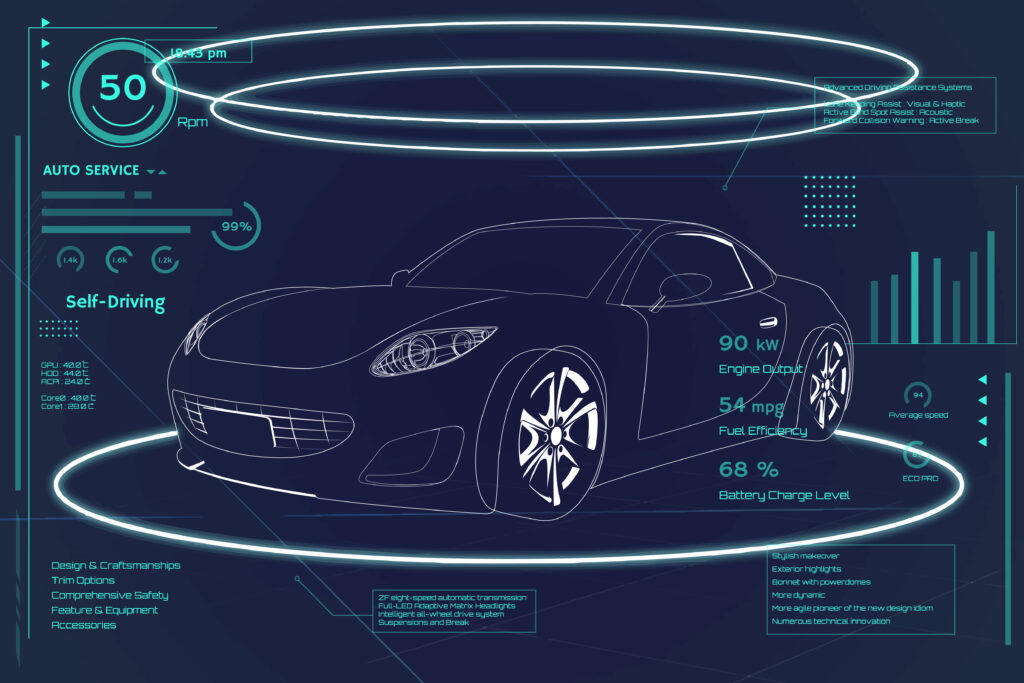Imagine this: You’ve been driving all day, and you start to head home as you get a message from your car that just received an update of its software. No appointment at the dealership, no waiting in line—just a smooth, wireless update that keeps your vehicle running smoothly and securely. And it isn’t science fiction; it’s the reality of Over-the-Air (OTA) updates, a technology that’s revolutionizing the automotive sector.
Having spent years researching the technology of autos, I believe that OTA updates are more than a convenience today but a need in the networked world of tomorrow. It’s a must with cars growing smarter and far more autonomous in their operations, which calls for better car security than ever. In this piece, I am going to explain how OTA updates are revolutionizing car security, why they are important, and what the future holds for such a game-changing technology.

What Are Over-the-Air (OTA) Updates?
Let’s start with the basics. Over-the-Air (OTA) updates are wireless software updates delivered directly to your car via the Internet. Think of it like updating your smartphone, but for your vehicle. Instead of taking your car to a dealership or connecting it to a computer, the update happens automatically, often while you’re asleep or going about your day.
The greatest automobile manufacturers in the world are taking up this technology. Brands like Tesla, Ford, and BMW are taking the lead when it comes to OTA updates and will make all the difference between performance and safety. For example, Tesla sometimes releases updates that add new features but also work to solve potential security breaches. It is a win for both the driver and the manufacturers.
Why Car Security Matters More Than Ever
Modern cars are no longer just mechanical machines—they’re highly sophisticated computers on wheels. With features like infotainment systems, telematics, and even autonomous driving capabilities, today’s vehicles are more connected than ever. But this connectivity comes with a downside: increased vulnerability to cyber threats.
In my research, I’ve come across several alarming examples of car hacking. One of the most notable incidents happened in 2015, when cybersecurity researchers demonstrated how they could remotely take control of a Jeep Cherokee’s steering, brakes, and transmission. This was a wake-up call for the industry, highlighting the urgent need for stronger car cybersecurity solutions.
Car security isn’t just about protecting your vehicle—it’s about safeguarding your data and ensuring your safety on the road. As cars become more autonomous, the stakes will only get higher. That’s where OTA updates come in.
How Over-the-Air (OTA) Updates Are Enhancing Car Security
So, how exactly do OTA updates make your car more secure? Let’s break it down:
1. Timely Security Patches
One of the biggest advantages of OTA updates is the ability to deploy timely security patches. When a vulnerability is discovered, manufacturers can quickly push an update to fix the issue, often before it can be exploited by hackers. This proactive approach ensures that your car is always equipped with the latest defenses.
2. Real-Time Threat Detection
OTA updates also enable real-time threat detection. By continuously monitoring your vehicle for unusual activity, manufacturers can identify and respond to potential threats almost instantly. If something suspicious is detected, an update can be sent immediately to address the issue.
3. Enhanced Encryption
With OTA updates, manufacturers can continuously improve encryption protocols to secure data transmission between your car and external servers. This means sensitive information, like your location or driving habits, stays protected from prying eyes.
4. Remote Diagnostics
Another benefit is remote diagnostics. If a security issue arises, manufacturers can identify and resolve it without requiring a physical inspection. This not only saves time but also ensures that potential vulnerabilities are addressed promptly.
5. Improved Authentication
Finally, OTA updates can enhance user authentication methods, such as biometrics or two-factor authentication. These measures add an extra layer of security, making it harder for hackers to gain access to your vehicle’s systems.
The Benefits of OTA Updates for Car Security
Beyond security, OTA updates offer a host of other benefits:
1. Convenience
No more trips to the dealership for software updates. OTA updates are delivered directly to your car, saving you time and hassle.
2. Cost-Effectiveness
By reducing the need for recalls and manual updates, OTA technology helps manufacturers save money—and those savings can be passed on to consumers.
3. Proactive Protection
OTA updates ensure that your car is always equipped with the latest security features, providing peace of mind in an increasingly connected world.
4. Future-Proofing
As new threats emerge, OTA updates allow manufacturers to adapt quickly, ensuring that your car remains secure for years to come.
Challenges and Limitations of OTA Updates
Of course, no technology is perfect. Here are some challenges our team has identified:
1. Data Privacy Concerns
OTA updates require the collection and transmission of data, which raises privacy concerns. Manufacturers must be transparent about how data is used and ensure that it’s protected from misuse.
2. Reliability
Failed updates or software bugs can potentially disrupt your car’s functionality. Manufacturers must rigorously test updates to minimize these risks.
3. Cybersecurity Risks
Ironically, OTA systems themselves can be targeted by hackers. Manufacturers must implement robust security measures to protect the update process.
The Future of Over-the-Air (OTA) Updates and Car Security
Looking ahead, I believe OTA updates will continue to evolve, driven by advancements in AI, 5G, and blockchain technology. These innovations will make updates faster, more secure, and more seamless than ever before.
In the era of autonomous vehicles and smart cities, OTA updates will play a crucial role in ensuring the safety and security of our transportation systems. As vehicles become more interconnected, the ability to update and secure them remotely will be essential.
Conclusion
In conclusion, Over-the-Air (OTA) updates are revolutionizing car security by providing timely, convenient, and cost-effective solutions to protect modern vehicles. As our cars become more connected, the importance of robust cybersecurity measures cannot be overstated. By adopting OTA technology, manufacturers can ensure that their vehicles remain secure, reliable, and future-proof.
FAQs
1. What are OTA updates, and how do they work?
OTA updates are wireless software updates delivered directly to your car via the internet. They allow manufacturers to improve performance, add new features, and fix security vulnerabilities without requiring a visit to the dealership.
2. Are OTA updates safe for my car?
Yes, OTA updates are designed to be safe and secure. However, manufacturers must implement robust cybersecurity measures to protect the update process from potential threats.
3. Which car brands use OTA updates?
Leading brands like Tesla, Ford, and BMW are already using OTA updates to enhance their vehicles’ performance and security.
4. Can Over-the-Air (OTA) updates be hacked?
While Over-the-Air (OTA) systems themselves can be targeted by hackers, manufacturers use advanced encryption and authentication methods to minimize this risk.








1 Comment